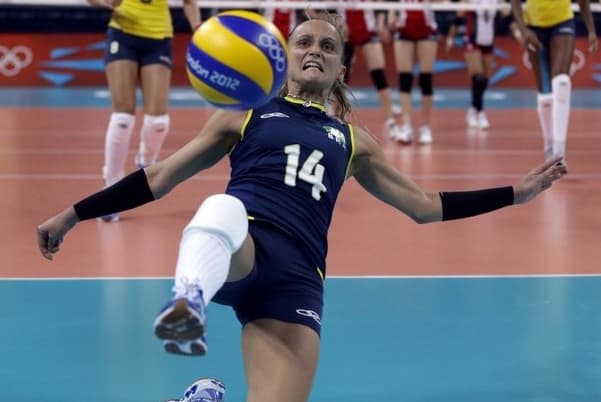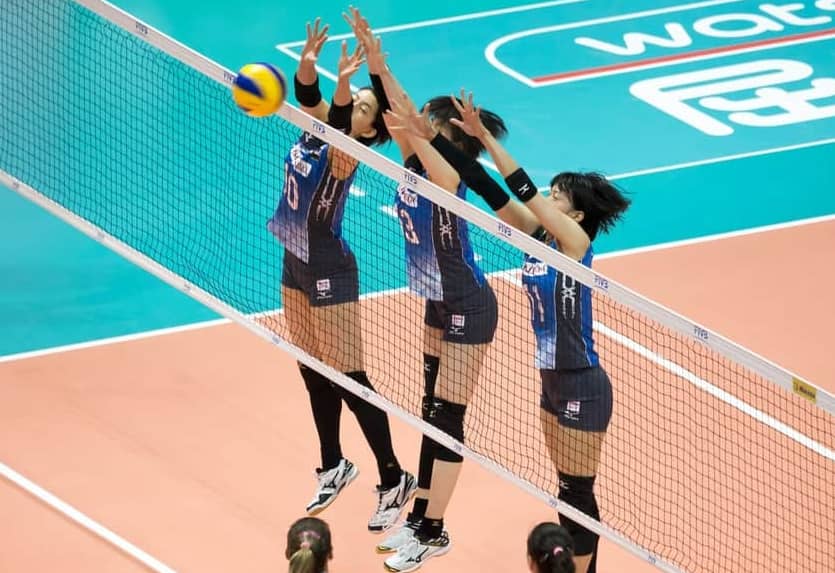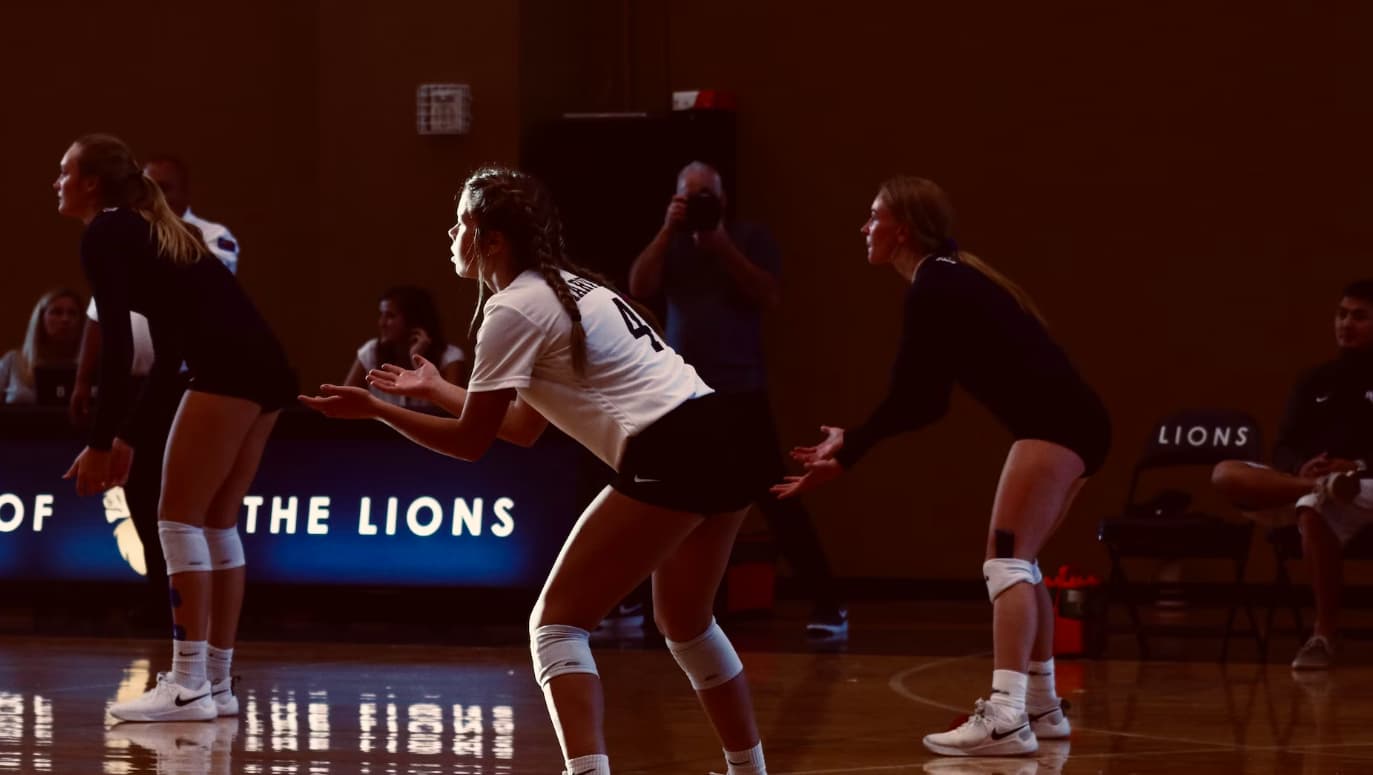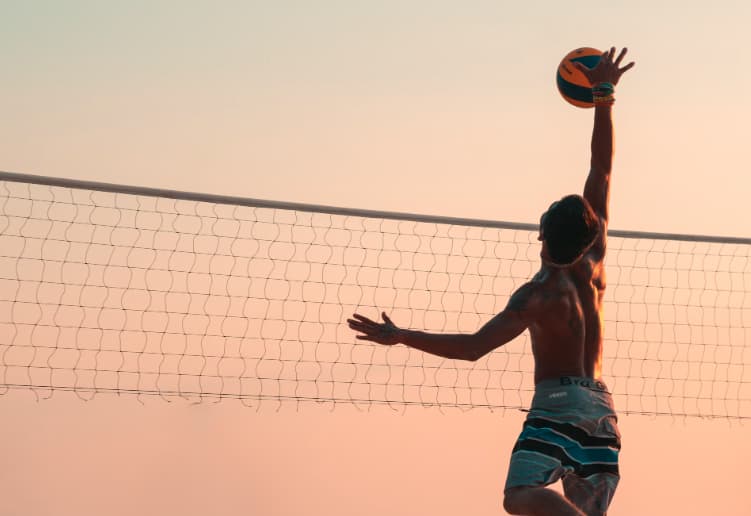Volleyball is a sport known for its grace, finesse, and athleticism. Players leap into the air to spike the ball over the net or dive to the floor to save a point. Using your feet seems almost contrary to the elegant nature of the game. So can you kick the ball in volleyball?
The short answer is yes, you can kick the ball! The official rules state that players can contact the ball with any part of their body. That means legs and feet are fair game.
But just because you can kick doesn’t mean you should make a habit of it. Kicking is generally seen as a last resort, something you do out of desperation to keep the ball in play. It’s not a recommended technique. However, there are some instances where using your feet makes sense.
Can You Kick the Ball in Volleyball?

Let’s take a closer look at when and why kicking happens in volleyball, and if it’s a skill you should practice.
The Evolution of Kicking in Volleyball
Up until 1993, kicking was against the rules in volleyball. The original standard was that players could only contact the ball with their body from the knee up. Using your feet or legs below the knee was prohibited.
This changed when the Federation of International Volleyball (FIVB) altered the wording of its rules. The new phrasing stated that the ball could be contacted with any part of the body. This opened the door for players to make contact with their feet or legs to save a ball.
The intent was to create a more dynamic play. Allowing players to interact with the ball however possible enabled longer rallies and more highlight reel moments. It made the game more exciting for both players and spectators.
The libero position was also introduced around this time for similar reasons. The libero extended plays in the backcourt and provided opportunities for daring defensive moves.
So kick saves went from illegal plays to circus-worthy feats celebrated by crowds. But just because you can kick doesn’t mean you should rely on it as a go-to technique.
Appropriate Times to Use Your Feet
Here are some instances where kicking the ball is warranted:
- Desperate defense – When a ball is screaming toward the floor, a player may have no choice but to throw a leg out and deflect it up. Anything to keep it off the ground! This happens most in the backcourt but could occur anywhere.
- At the net – After blocking, players often find themselves with the ball right at their feet. With no time to bend down for a clean pass, a quick kick upward can keep the play alive.
- Chasing down balls – When sprinting after a ball headed out of bounds, kicking may be the only way to reach it before it hits the ground. Diving isn’t always possible if obstacles like benches or bleachers are in the way.
- As a setter – Some talented setters can actually set a low ball effectively with their feet. This showcases excellent coordination and touch.
So in moments of desperation, or displays of skill, kicking has its place. But most of the time, it’s better to avoid it.
Downsides of Kicking
Kicking is inherently harder to control than passing with your forearms or hands. Volleyball revolves around handling the ball with precision and purpose. Think of the setter placing the ball flawlessly to a hitter. That kind of finesse isn’t possible with your feet.
The exception is players with a soccer background who are comfortable using their feet. But in general, kicking takes practice to develop a soft touch.
Here are some downsides to relying on kicks:
- Lack of control – The ball can sail out of bounds or go somewhere unintended. Kicking is a ‘just get it up’ move rather than a controlled pass to a target.
- Development of bad habits – Repeatedly kicking because it’s easier than learning proper passing techniques builds a detrimental habit.
- Higher risk of injury – Extending legs to kick puts strain on muscles and joints. Repeated impact from forceful contact with the ball takes its toll over time.
- Frustration for teammates – Teammates struggle to handle errant balls kicked wildly rather than passed cleanly. This disrupts the offensive flow.
- Delayed transition – Taking the extra moment to kick rather than passing immediately slows tempo and decision making in transition.
- Perception of poor etiquette – Kicking the ball hard across the net after a play may be seen as unsportsmanlike by opponents.
Coaches generally discourage excessive kicking because they want players to master controlled technical skills instead.
Is Kicking a Skill Worth Practicing?
For most volleyball players, there are at least twenty other skills that should take priority over kicking. Serving, passing, setting, hitting, blocking, and digging all require extensive practice time to improve.
Mastering the fundamentals is far more important than developing specialized kicking abilities. Even defensive specialists in the backcourt are better served to sharpen their passing form and ball control.
The best kick saves come from reactions more than practiced technique. As you play more over time, your body develops a natural sense of how to respond when a ball comes at your feet.
That being said, kicking drills can add value in some circumstances:
- As a fun warm-up activity – Light kicking exercises get the muscles activated and the brain engaged. The change of pace from standard volleyball drills freshens up the mind.
- For younger beginners – New players learning the basics benefit from getting familiar with contacting the ball in different ways, including using their feet.
- For soccer cross-training – Athletes who play soccer develop touch and coordination that translates well to volleyball kicking situations.
- For volleyball specificity – Some beach players use light kicking drills to simulate unpredictable wind impacts on the ball. This sharpens reflexes.
- For injury prevention – Strengthening the muscles and joints of the legs reduces injury risk from the impacts of sporadic kicking.
So while extensive kicking practice isn’t warranted for most players, it can augment training in small doses.
The Savvy Player’s Approach to Kicking
Kicking is a tool best used judiciously. Here are some tips on the wise way to incorporate your feet:
- First master passing and digging fundamentals. Solid ball control skills eliminate the need for kicks.
- Use kicks for saves, not regular passes. Keep it as a backup plan, not a primary skill.
- Kick only when necessary. Don’t force it if you have time to pass cleanly.
- Develop a light kick touch to avoid spraying balls. This comes from the game experience.
- Perform leg strengthening exercises to handle the occasional impact.
- Use kicking drills sparingly to supplement but not replace core training.
- Focus kicks upward or forward, not blasted across the net. Remember sportsmanship.
- Be mindful of teammates’ preferences. Some like kick passes, others hate them. Adjust accordingly.
- Accept that kicks will happen. Don’t stress, just learn from experience.
Also Check:
- Can You Block The Serve in Volleyball
- Why Do Volleyball Teams And Benches Switch Sides
- Volleyball Net Touch Rules
- How Long Do Volleyball Games Last
Conclusion:
Kicking is inevitable in volleyball. With smarts and moderation, it can be an asset, not a liability. Use it to your advantage when the situation calls for it. But don’t let it become a crutch that undermines your development of controlled ball handling abilities.
Remember, legs have their place in volleyball. Use them wisely to take your game to the next level!



